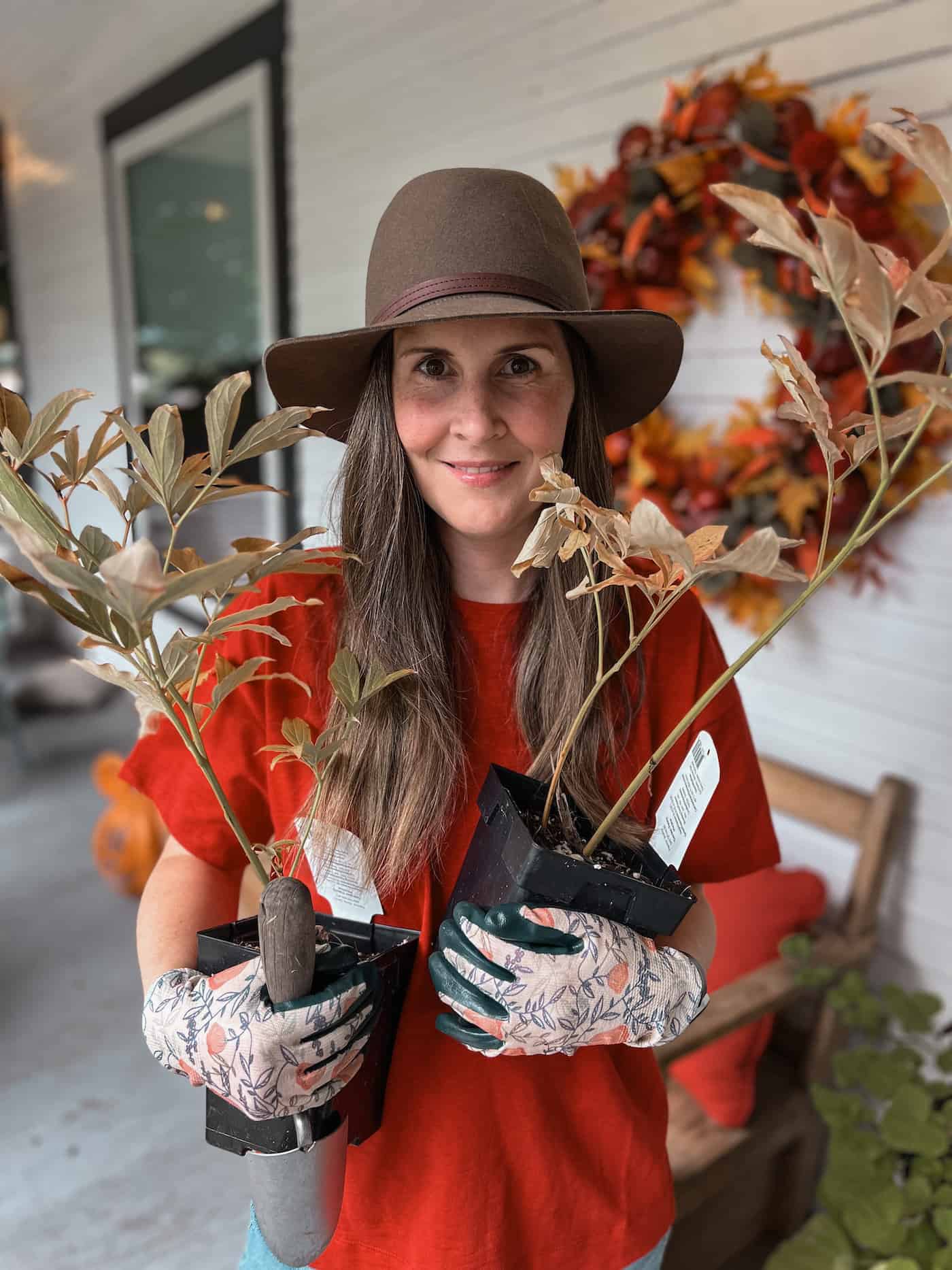Looking for some lovely perennial flowers to plant in fall? You’re in luck!
Most herbaceous perennial flowering plants do very well when planted in the fall when the soil is warm and nighttime temperatures cool down a bit. Fall planting allows roots to become established in the soil before winter, giving the plants a head start next growing season.
Let’s see some of the best perennials to plant in autumn!
1. Peony
Peonies are renowned for their large, ruffled blossoms, which can range in color from the purest whites to romantic pinks, deep reds, corals, and even yellows in certain varieties. The blossoms can take on several forms, from simple, single petals to intricate layers of double blooms. Beyond their flowers, peonies have a sturdy, bushy growth habit, with glossy, deep green leaves that provide a beautiful backdrop in garden beds into the summer season.
Peonies are adaptable but have particular preferences. They thrive best in well-draining soil, enriched with organic matter, and positioned in a spot that receives full sun to light afternoon shade. While peonies are drought-tolerant once established, they benefit from regular watering during their initial growth and flowering phases. One unique aspect of peonies is their longevity; with proper care, these plants can grace a garden for decades, if not generations.
Planting peonies requires a bit of foresight, as their tuberous roots are sensitive to planting depth. The eyes of the tuber (small, bud-like points) should be positioned no more than 1-2 inches below the soil surface in colder climates and just at or slightly above the surface in warmer zones. Dig a generous hole approximately twice the width of the tuber, and enrich the soil with compost. After positioning the tuber, backfill with soil and water thoroughly.
It’s worth noting that peonies may take a couple of years to truly establish and produce their iconic blooms, but the wait is undeniably worth it. Opting to plant peonies in the fall gives them a chance to settle before winter, ensuring a robust start in the subsequent spring and increasing the chances of blooms in the coming seasons.
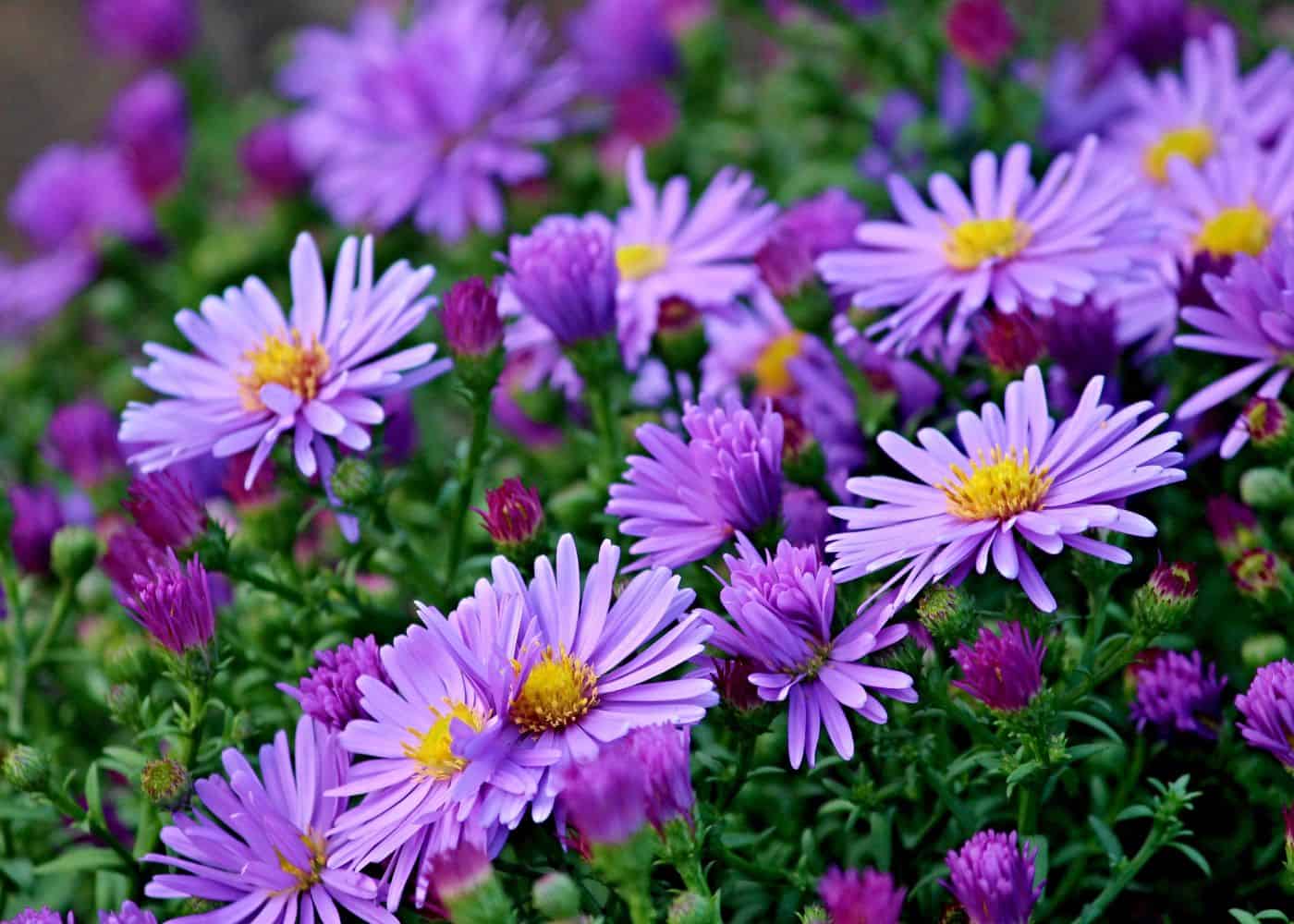
2. Aster
Asters stand as the heralds of the autumn garden, offering a colorful respite as many other blooms start to fade. Characterized by their daisy-like appearance, Asters feature a central disc that can be yellow, gold, or even reddish, surrounded by slender petals in shades that range from vibrant purples and blues to pinks, whites, and occasionally reds. Depending on the species and variety, the height of Asters can vary dramatically, with some dwarf varieties standing only 8 inches tall, while taller species can soar to 4 feet or more.
These perennial favorites flourish in well-drained soil under full sun, although they can tolerate some light afternoon shade, especially in areas with intense summer heat. Asters are relatively undemanding, but they appreciate moderately fertile soil that remains consistently moist. While they are somewhat drought-tolerant once established, they’ll look their best with regular watering during prolonged dry spells. Additionally, Asters are cold-hardy and can resist the early frosts of fall, making their blooms one of the last colorful displays in many gardens.
Planting Asters involves selecting a spot that gets abundant sunlight throughout the day. The planting hole should be roughly twice the size of the root ball to ensure the roots can spread out. Once positioned, the plant’s base should sit level with the soil surface. After backfilling with soil, generous watering is essential to help the plant settle in. Mulching around Asters can assist in retaining soil moisture and suppressing weeds.
Choosing to plant Asters in the fall can be particularly strategic, as it allows the plants to establish their roots in the cooler weather, preparing them for a strong start in the following spring. This root development ensures the plant is robust and ready to produce its iconic blooms by the time autumn rolls around again.
When planting perennials in the fall, make sure to water them well until the ground freezes, and consider mulching around them to protect the roots from extreme cold and to conserve soil moisture.
Mary Jane Duford, Home for the Harvest
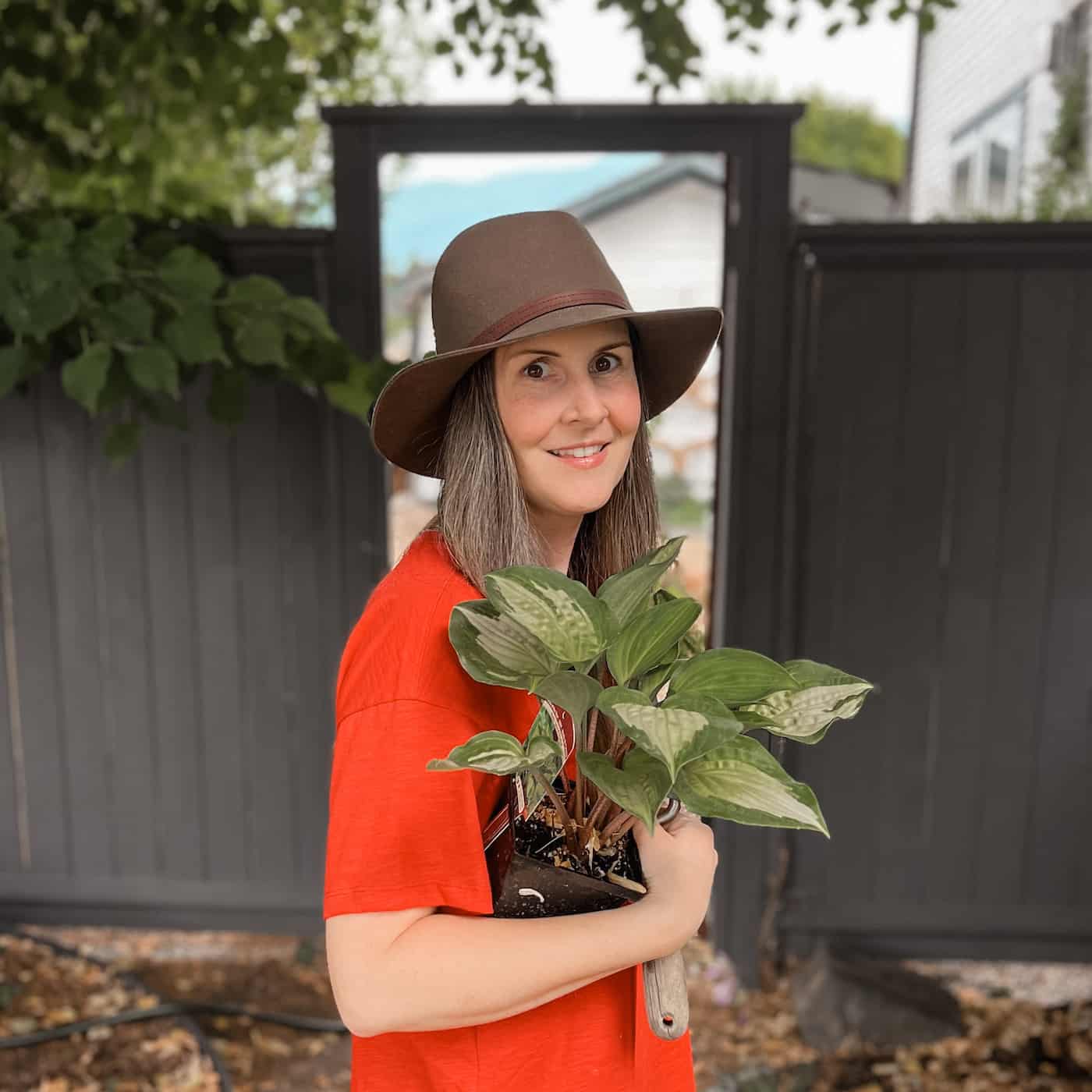
3. Hosta
Hostas come in a rich tapestry of colors—ranging from deep greens to blue-greens and even variegated whites, yellows, and golds. The leaves can vary dramatically in size and shape, from small, lance-like forms to broad, heart-shaped varieties. Though their foliage is the main attraction, Hostas also produce tall, slender stalks adorned with tubular flowers, typically in shades of lavender or white, which bloom in mid to late summer.
Hostas are the quintessential shade plant, thriving best in dappled to full shade. They prefer rich, well-draining soil with consistent moisture. While they can manage in a variety of soil types, incorporating organic matter, like compost, at planting time can greatly benefit their growth. Hostas are notably drought-tolerant once established, but they flourish best with regular watering, especially in drier conditions. It’s also worth noting that while they are generally low-maintenance, they can be a delicacy for deer and slugs, so gardeners might need to take preventive measures in areas where these pests are prevalent.
When planting Hostas, a location sheltered from the intense midday sun is ideal. The planting hole should be spacious, approximately twice the width of the root ball, to give the roots ample room to spread. The top of the root ball should be level with the ground’s surface after setting the plant. Backfill with a mix of garden soil and compost, then thoroughly watering. Applying a layer of mulch around the plant can aid in retaining soil moisture and keeping the roots cool.
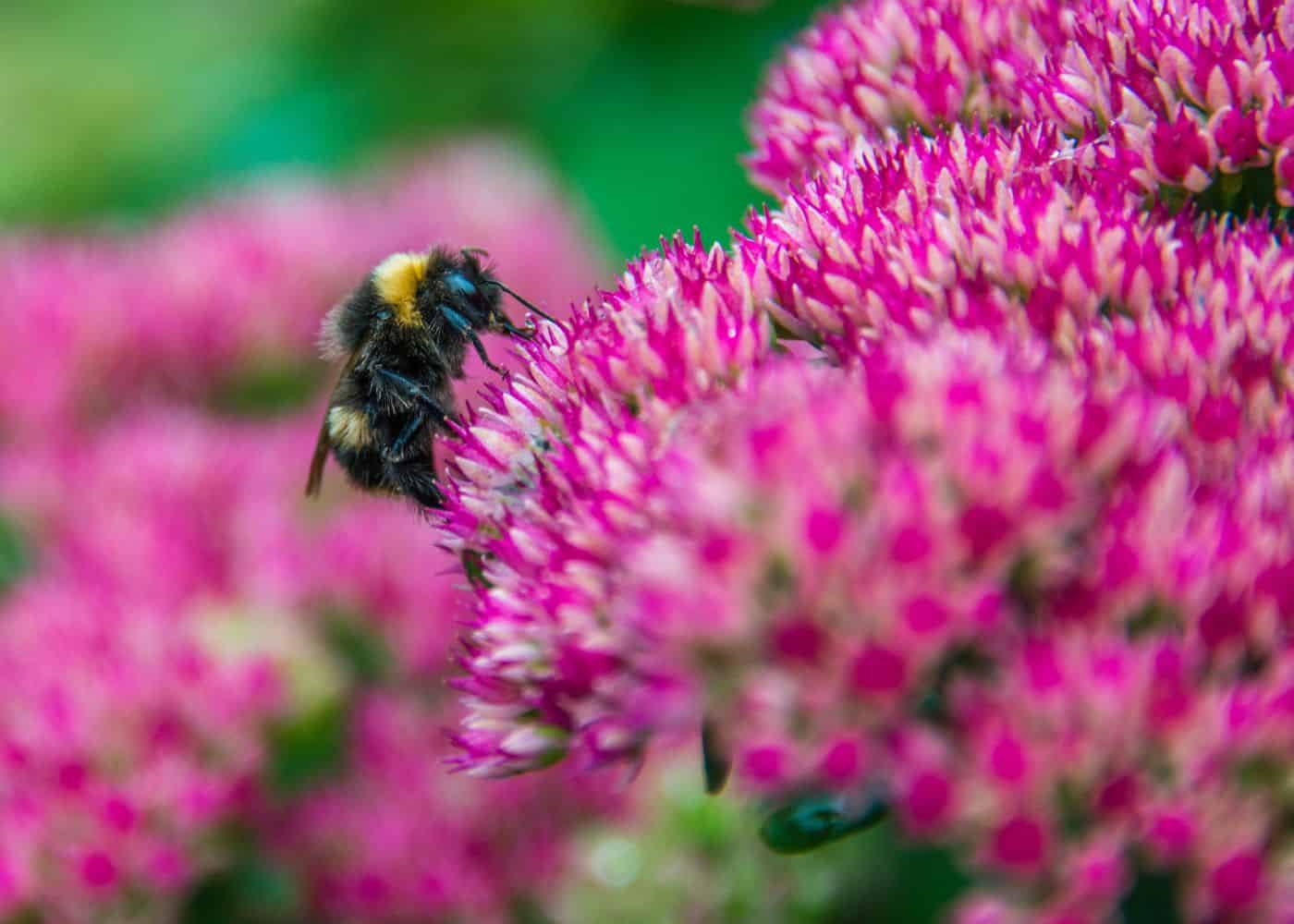
4. Sedum
Sedum, widely known as Stonecrop, showcases a fascinating blend of fleshy, succulent leaves and star-shaped flowers, making it a standout in both rock gardens and border landscapes. The flowers appear in dense, round clusters and come in an array of colors, including pink, red, yellow, and white, depending on the variety. Stonecrop plants display a broad range of heights, from ground-hugging creepers that barely reach a few inches to upright varieties like ‘Autumn Joy’, which can stand at 18 to 24 inches tall.
Stonecrop is celebrated for its impressive adaptability. While it thrives best in full sun, it can handle partial shade, especially in hotter climates. Sedums are drought-tolerant plants, owing to their succulent leaves, which store water. They have a particular fondness for well-draining soil and can even flourish in rocky, gravelly, or poor soil conditions. Just don’t plant them in a waterlogged spot if you can help it.
When it’s time to plant Sedum, select a location bathed in sunlight for the majority of the day. The planting hole should be about double the width of the plant’s root ball. Position the Sedum so that the top of its root system is on par with the ground level, and then fill in the hole with soil. Generously water the freshly planted Sedum and, if desired, mulch lightly around its base.

5. Hellebore
Hellebores bloom in late winter into early spring, offering exquisite, nodding blossoms when most of the garden lies dormant. The cup-shaped flowers come in a sophisticated palette of colors—creamy whites, dusty pinks, rich purples, lime greens, and even near-blacks—with some varieties boasting intricate patterns, speckles, or picotee edges. The flowers rise above their leathery, evergreen foliage, providing both color and texture during the colder months. Depending on the variety, Hellebores can grow anywhere from 12 to 18 inches tall.
Adored for their resilience, Hellebores are versatile perennials that thrive in partial to full shade. They favor rich, well-draining soil with a generous addition of organic matter. Given their winter-blooming nature, they appreciate protection from extreme cold winds but can tolerate frost and snow, often peeking through a white blanket with their hearty blooms. Once established, they require minimal care, proving to be drought-tolerant and largely resistant to pests and diseases.
To plant Hellebores, select a shaded or dappled sunlight spot, preferably shielded from harsh winter winds. Dig a hole twice as wide as the root ball, integrate some compost into the excavated soil, and then position the plant ensuring that its crown is at soil level. Backfill the hole, pat down the soil, and water generously.
Planting Hellebores in the fall ensures that they are well-established by winter, ready to usher in the new season with their charming blooms. Given their longevity, these plants can thrive in the garden for years, gradually forming impressive clumps that serve as focal points during winter and early spring.

6. Coreopsis
Coreopsis is a beacon of vibrant energy in the garden, radiating cheerful hues and attracting a myriad of pollinators with its daisy-like blooms. These sun-loving perennials are cherished for their extended bloom time, presenting a sea of golds, yellows, reds, pinks, and sometimes even bicolor petals from late spring into the fall. Depending on the variety, Coreopsis plants can range in height from compact 6-inch mounds to taller varieties that stretch to 3 feet or more.
Coreopsis plants are the embodiment of low-maintenance gardening. Preferring full sun, they thrive in well-draining soil, though they are notably tolerant of various soil types, including sandy, rocky, or even clay-heavy soils. Once established, they exhibit commendable drought resistance, making them a favorite for xeriscaping or gardens in drier regions. Despite their hardy nature, they appreciate occasional watering during prolonged dry spells to sustain their blooming enthusiasm.
To plant Coreopsis, choose a sun-bathed spot in the garden. Dig a hole about twice the width of the root ball, place the plant in, ensuring the crown is level with the ground surface, and then backfill with soil. Water generously after planting to help settle the soil around the roots.
While Coreopsis can be planted in the spring, introducing them to the garden in the fall allows them to establish their root system in the cooler months, ensuring a more vigorous growth and a richer bloom display in the following season. As an added bonus, these plants, when in bloom, serve as a magnet for butterflies, making them a delightful addition for nature enthusiasts.
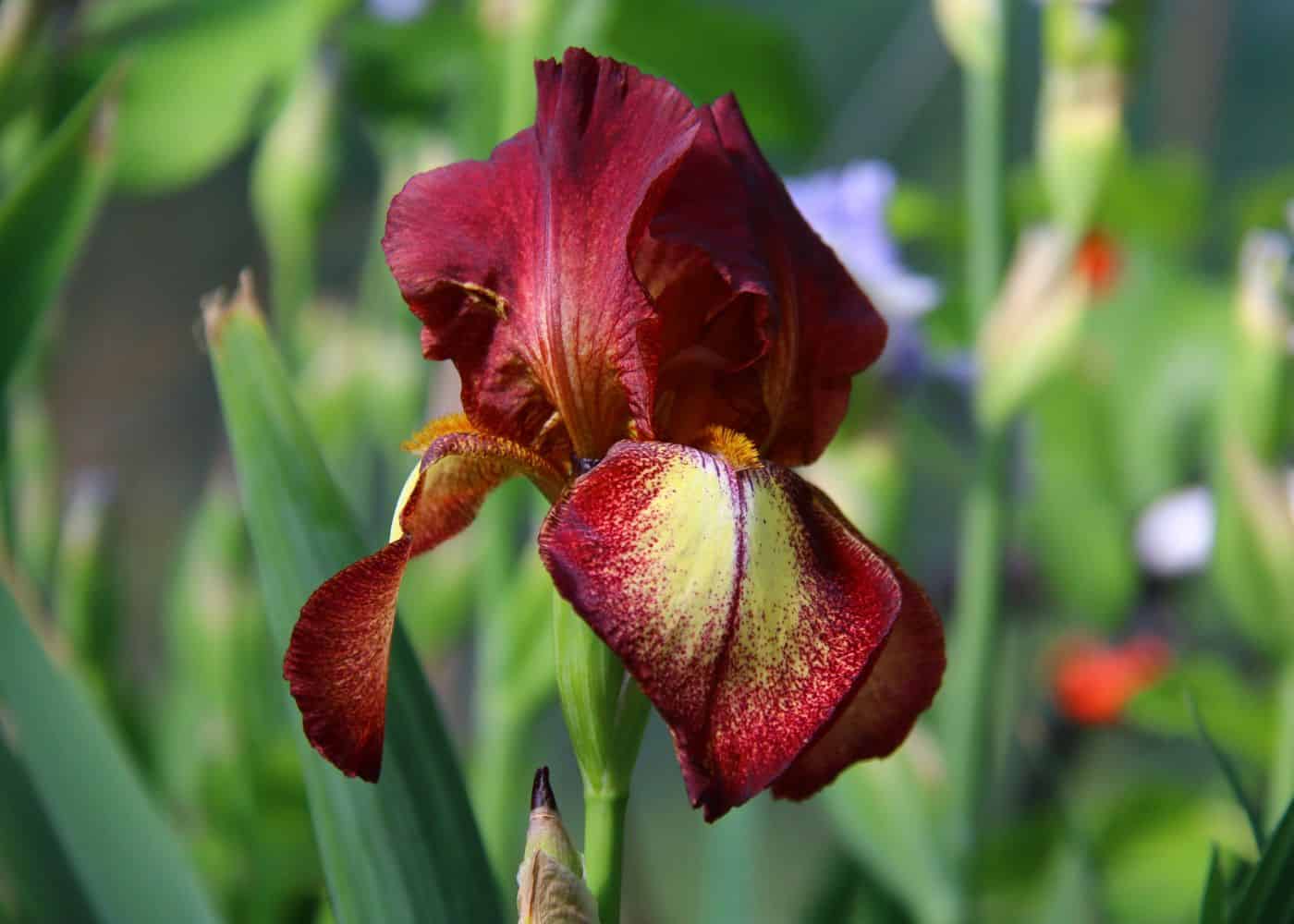
7. Iris
Irises stand out in the perennial garden with their unique flower structure: three upright petals (called “standards”) and three drooping petals (called “falls”). These elegant blooms can be found in a plethora of shades including purples, blues, yellows, whites, oranges, and even browns, with many showcasing intricate veining or contrasting “beards” on their falls. Depending on the species and variety, the height of irises can vary widely, from diminutive 8-inch dwarf varieties to towering plants that can reach over 4 feet.
Irises are sun-lovers, flourishing in well-draining soil and requiring at least six hours of sunlight daily. They are particularly sensitive to waterlogged conditions, so ensuring proper drainage is essential. The rhizomes (the thick, horizontal root structures from which the plant grows) prefer to be somewhat exposed to the sun, making them unique compared to many other perennials. While irises are reasonably drought-tolerant once established, they benefit from consistent moisture during their growth and bloom phases. It’s also worth noting that irises can be divided every few years to maintain vigor and prevent overcrowding.
To plant irises, particularly the popular bearded iris, dig a shallow hole in a well-draining location that receives ample sunlight. Create a small mound in the center, place the rhizome atop it, and spread the roots around the mound. Cover the rhizome with a thin layer of soil, leaving the top exposed. After planting, water them thoroughly. Fall is an excellent time for planting or dividing irises, as it allows them to establish roots before the winter chill sets in. By the time spring arrives, the plant will be primed for vigorous growth, leading to a spectacular show of blooms in late spring to early summer.
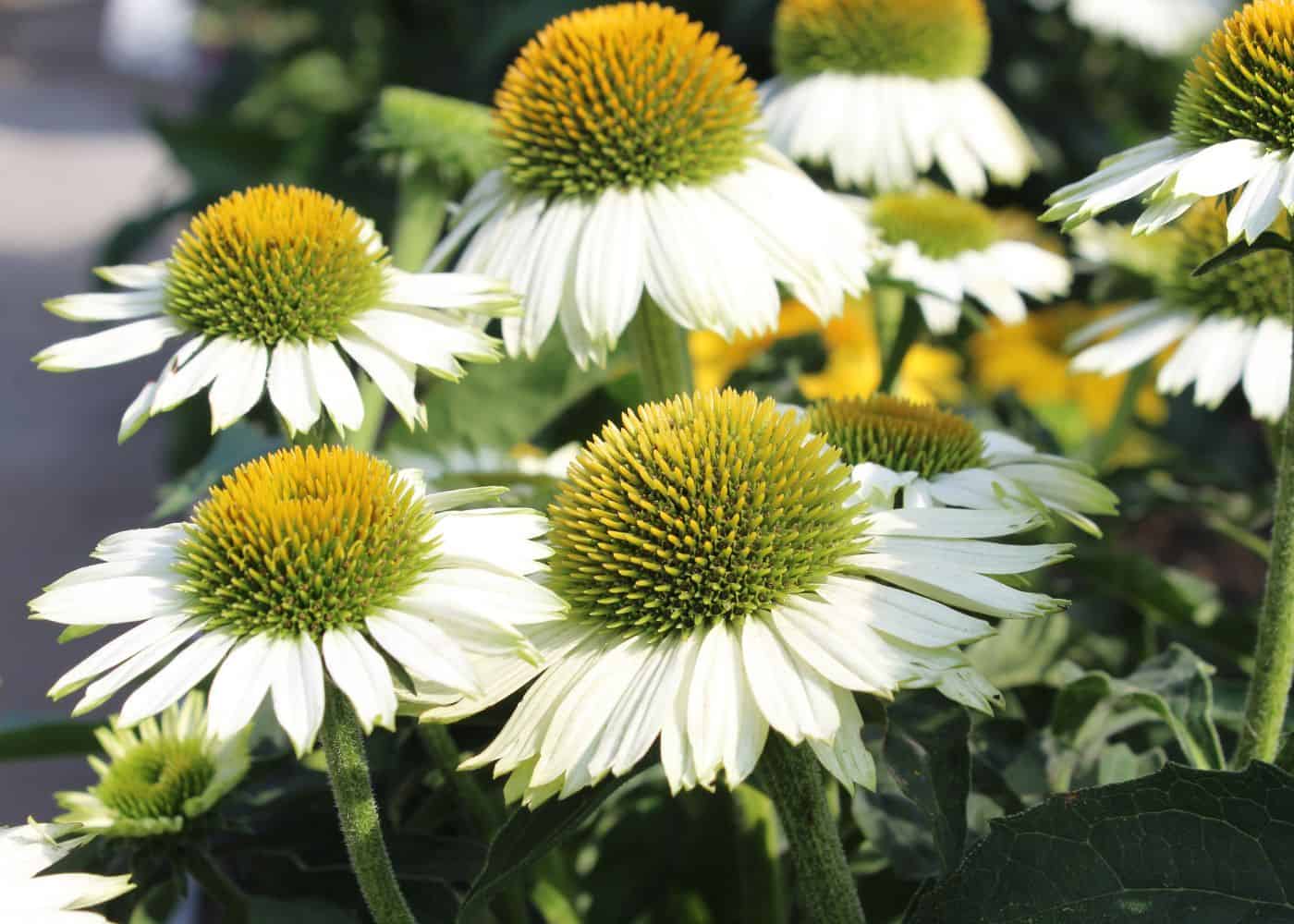
8. Echinacea
Echinacea, commonly known as Coneflower, boasts a distinctive flower shape characterized by raised central cones surrounded by drooping petals, evoking the look of a sombrero. The traditional Echinacea purpurea displays a bold purple hue, although modern cultivars now offer a vibrant palette ranging from whites and yellows to oranges, reds, and even multi-colored varieties. These perennials typically reach heights between 24 to 36 inches, with some dwarf and tall varieties falling outside this range.
Echinacea thrives in full sun but can tolerate partial shade, making it versatile for varied garden spaces. While it prefers well-draining soil enriched with organic matter, this hardy plant demonstrates a remarkable tolerance for drought, heat, humidity, and even poor soil conditions once established. Its deep-rooted nature allows it to access moisture from deeper soil layers, making it resilient in less-than-ideal planting locations.
When planting Echinacea, select a location that receives at least 4-6 hours of direct sunlight daily. Dig a hole twice as wide as the root ball and set the plant so that the top of the root ball is level with the soil surface. Backfill with soil, water thoroughly, and apply a layer of mulch around the base to retain moisture and prevent weeds. Planting Echinacea in the fall is advantageous because it gives the plant a chance to establish its root system before the winter. By the time spring arrives, the plant is well-prepared to produce robust growth and beautiful blooms, capitalizing on the full growing season ahead.
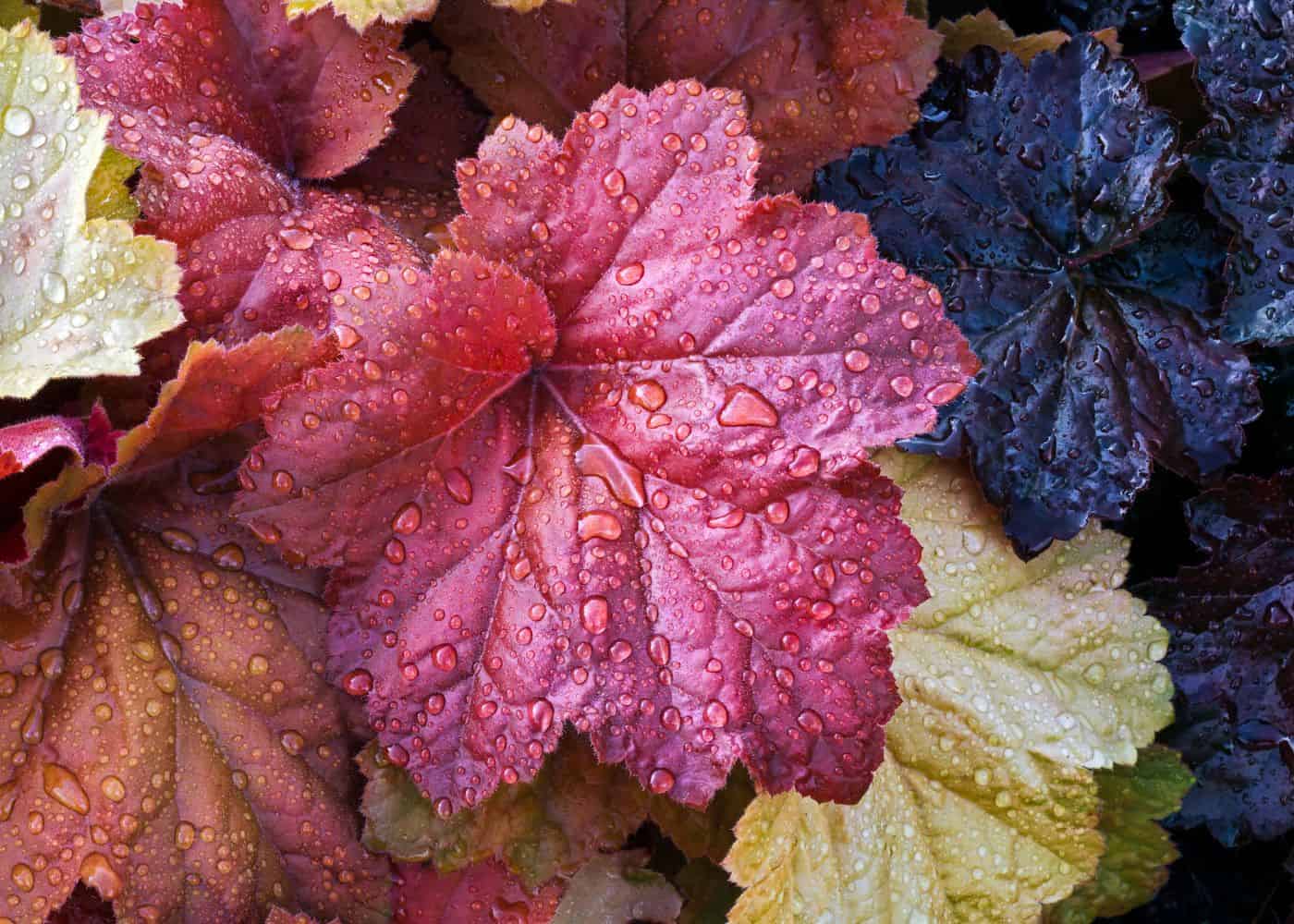
9. Coral bells
Coral Bells are renowned for the dual spectacle they offer: both through their frothy, bell-shaped flowers and their vibrantly colored, often veined or marbled foliage. The petite, delicate blooms rise on slender, arching stems, floating like ethereal wands above the mounding foliage. They vary in shades from soft whites and pinks to deep reds. However, it’s the foliage that often steals the show.
Depending on the variety, the leaves can be a tapestry of purples, silvers, greens, deep burgundies, or even caramel and peach hues. Typically, while the foliage forms low mounds about 8 to 12 inches high, the thin flower stalks can shoot up to 18 to 24 inches, creating a layered effect in the garden.
NCoral Bells have a predisposition for dappled sunlight and cool, well-draining soils enriched with organic matter. While they can endure a variety of lighting conditions from full sun to part shade, in hotter climates, they’ll appreciate a shelter from intense afternoon sun to prevent leaf scorch. Moisture-wise, these plants like consistency. While they’re reasonably drought-tolerant once established, they thrive best in soils that remain evenly moist but not waterlogged.
When planting Coral Bells, select a location that mimics their natural woodland habitat—perhaps beneath the light shade of a deciduous tree or on the edge of a shaded border. Dig a hole twice as wide as the plant’s root ball, introduce the plant, ensuring its crown is level with the soil’s surface, and then gently backfill. Watering well after planting will help it establish.

10. Daylily
The Daylily, fittingly named for its ephemeral blooms, produces numerous buds that ensure a succession of blooms, offering a vibrant display that can span several weeks. The trumpet-shaped flowers come in an astonishing array of colors—from the softest pastels to the most vivid reds, oranges, yellows, and purples—and can often flaunt combinations of colors, intricate patterns, or ruffled edges.
Daylilies are renowned for their adaptability and resilience. While they perform best in well-draining soil with full sun to partial shade exposure, they can also tolerate a range of challenging conditions, including poor soil, urban pollution, and coastal salt spray. Once established, Daylilies are drought-tolerant, though consistent watering can result in more prolific flowering. They are also largely free from pests and diseases, further cementing their status as a garden favorite.
To plant Daylilies, choose a location that receives good sunlight for at least half the day. Dig a hole that’s about twice the width of the plant’s root ball, set the plant in so that the crown (where the roots meet the stem) is roughly one inch below the soil surface, then backfill and water thoroughly.
Given their hardy nature, Daylilies can be planted or transplanted almost any time the soil is workable. However, planting in the fall ensures that they develop a robust root system during the cooler months, setting the stage for a lush display of flowers come late spring and summer. Over time, as Daylilies multiply and become crowded, they can be easily divided and replanted to rejuvenate their bloom and vigor.

11. Gaillardia
Gaillardia brings a fiery enthusiasm to gardens with its vivid, sun-kissed blooms. Their daisy-like flowers are an exuberant play of reds, oranges, and yellows, often with concentric circles or gradients that blend these warm tones in captivating patterns. Some varieties even present burgundy or deep wine-colored petals. Typically, Gaillardia plants grow to a height of 12 to 24 inches, making them suitable for both borders and container gardening.
Gaillardias are sun-worshippers and showcase their full brilliance in well-draining soils under the full gaze of the sun. Native to North America, they are built to endure the challenges of prairies and plains. As a result, they exhibit impressive drought tolerance once established, making them perfect candidates for xeriscapes or gardens in regions with limited rainfall. Additionally, these hardy perennials can thrive in various soil types, from sandy to loamy, and aren’t particularly fussy about soil pH.
Choose a sunny spot, dig a hole roughly twice the width of the root ball, and set the plant in, ensuring the crown is level with the surrounding soil. After backfilling, water it in well to settle the roots. Fall planting allows Gaillardia to lay down its roots and prepare for a profusion of blooms by the next summer.
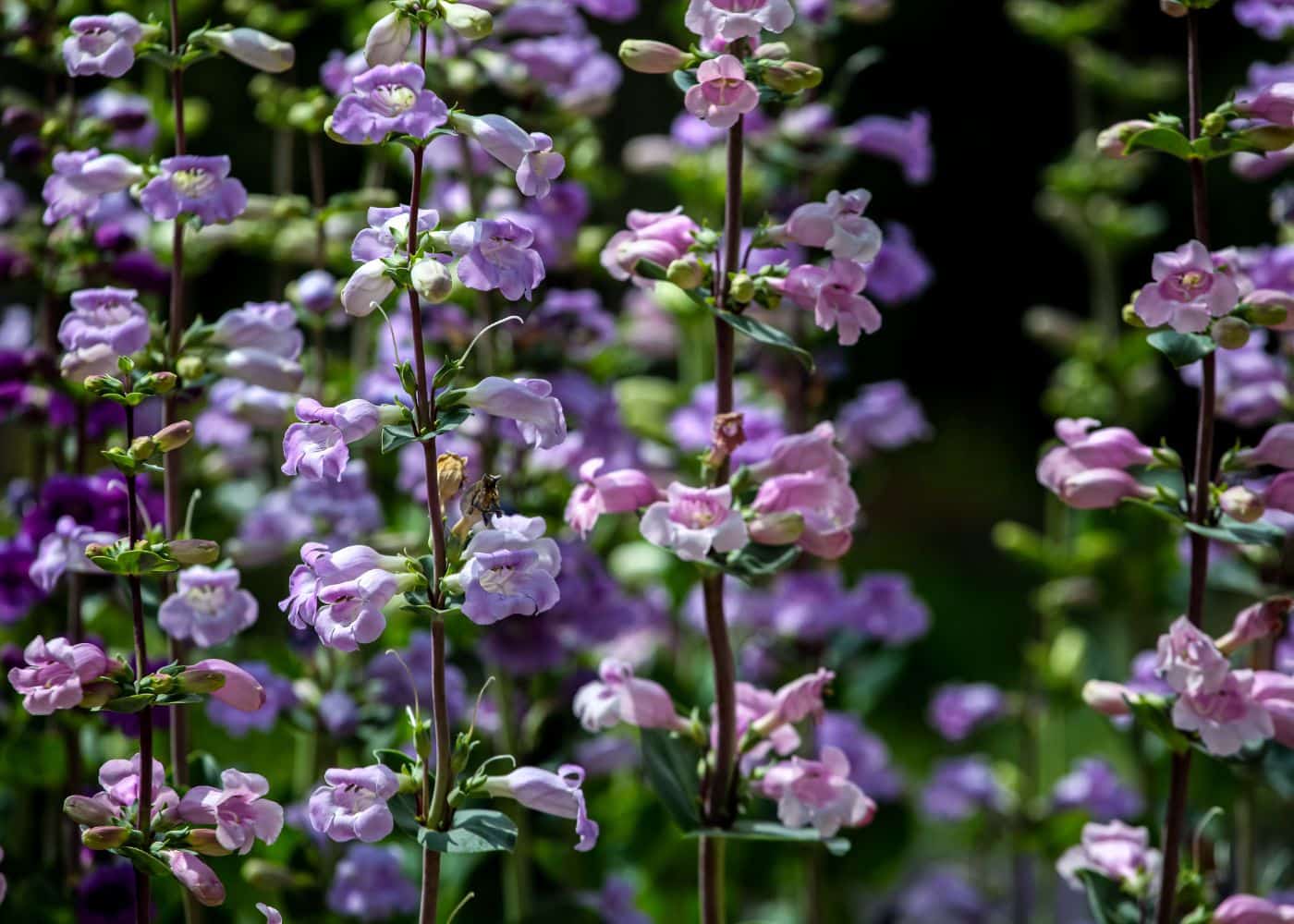
12. Penstemon
Penstemon graces gardens with tubular flowers that range from subtle to striking. These blooms, usually held in upright clusters, come in a spectrum of colors, including purples, blues, reds, pinks, and whites. Depending on the specific species and variety, Penstemon plants can vary significantly in size, from compact 1-foot varieties to more towering selections that can reach up to 5 feet in height.
Penstemons have developed a sturdy disposition. They generally prefer well-draining soil and a position in full sun to light shade. The plant’s tolerance to drought is noteworthy, especially once established, making it a suitable choice for water-wise gardens. While they can adapt to various soil types, Penstemons particularly thrive in soils that aren’t overly fertile, ensuring longer-lived plants and more prolific blooming.
When planting Penstemon, choose a location that provides ample sunlight. Dig a hole roughly twice the size of the plant’s root ball, place the plant in the hole, ensuring the crown sits at the level of the surrounding soil, and then backfill. A thorough watering post-planting helps settle the roots and establish the plant.
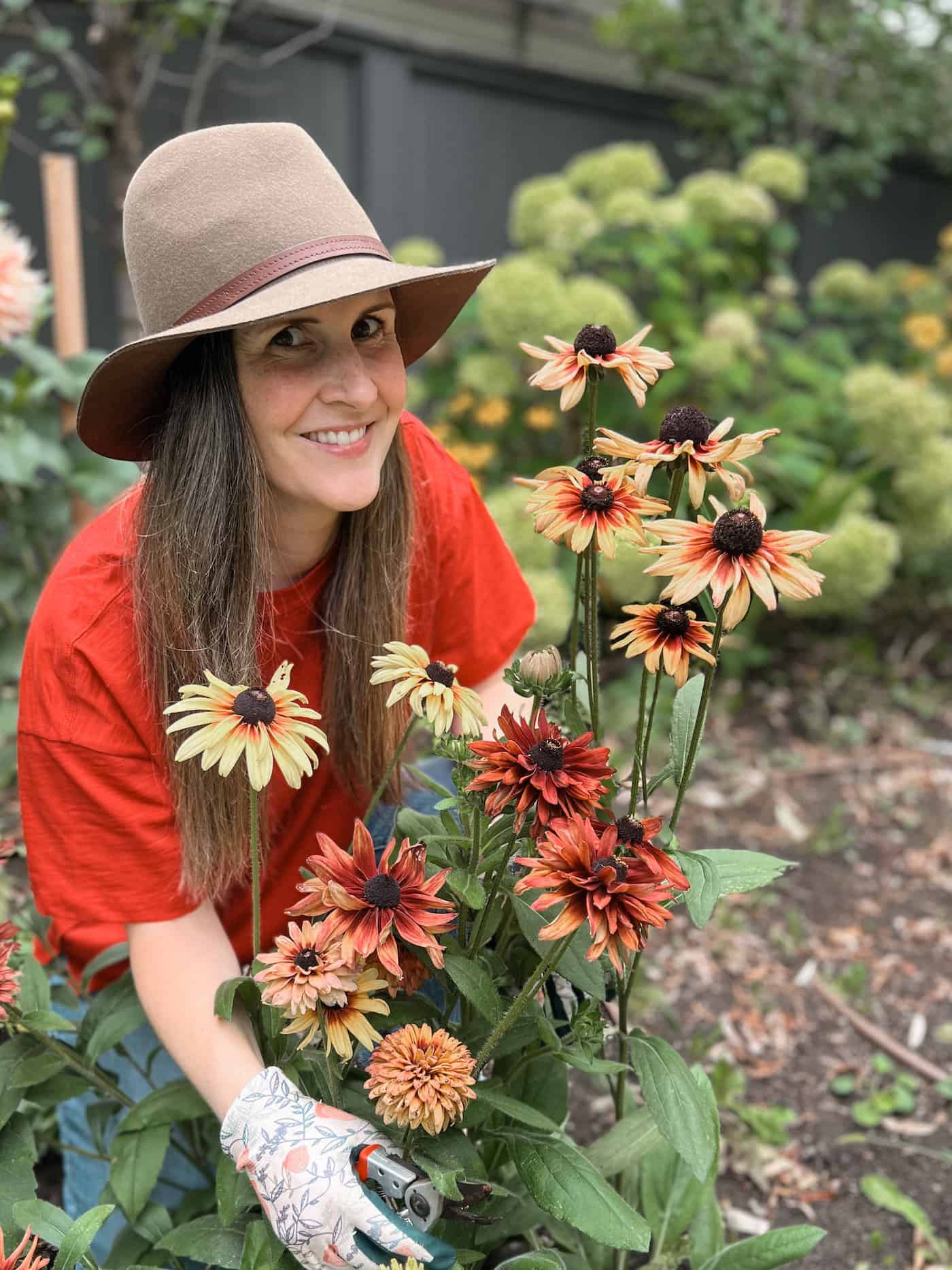
13. Rudbeckia
Rudbeckia, commonly recognized as Black-Eyed Susan, is celebrated for its cheerful, daisy-like flowers that feature golden-yellow to orange-yellow petals radiating from a dark chocolate central cone or “eye”. The contrast between the vibrant petals and the deep-hued center creates a striking visual appeal. Depending on the specific variety, the height of Rudbeckia plants can range from petite 12-inch plants to towering specimens approaching 3 feet or more, making them adaptable to various garden settings.
Ideal for creating a splash of late-summer color, Rudbeckia flourishes in full sun, although it can manage in light partial shade. The plant is highly adaptable, showing a preference for moderately fertile, well-draining soil, but also demonstrating a commendable tolerance for drought and poor soil conditions. Its ability to withstand challenging conditions, coupled with its resistance to many pests and diseases, has contributed to its widespread popularity in a variety of landscapes.
To plant Rudbeckia, choose a location that benefits from at least 4-6 hours of direct sunlight each day. Create a planting hole that’s about twice the width of the plant’s root ball, positioning the plant so its root ball top aligns with the ground level. After backfilling with soil, water the plant generously and consider applying a protective mulch layer around its base, which aids in moisture retention and weed deterrence.
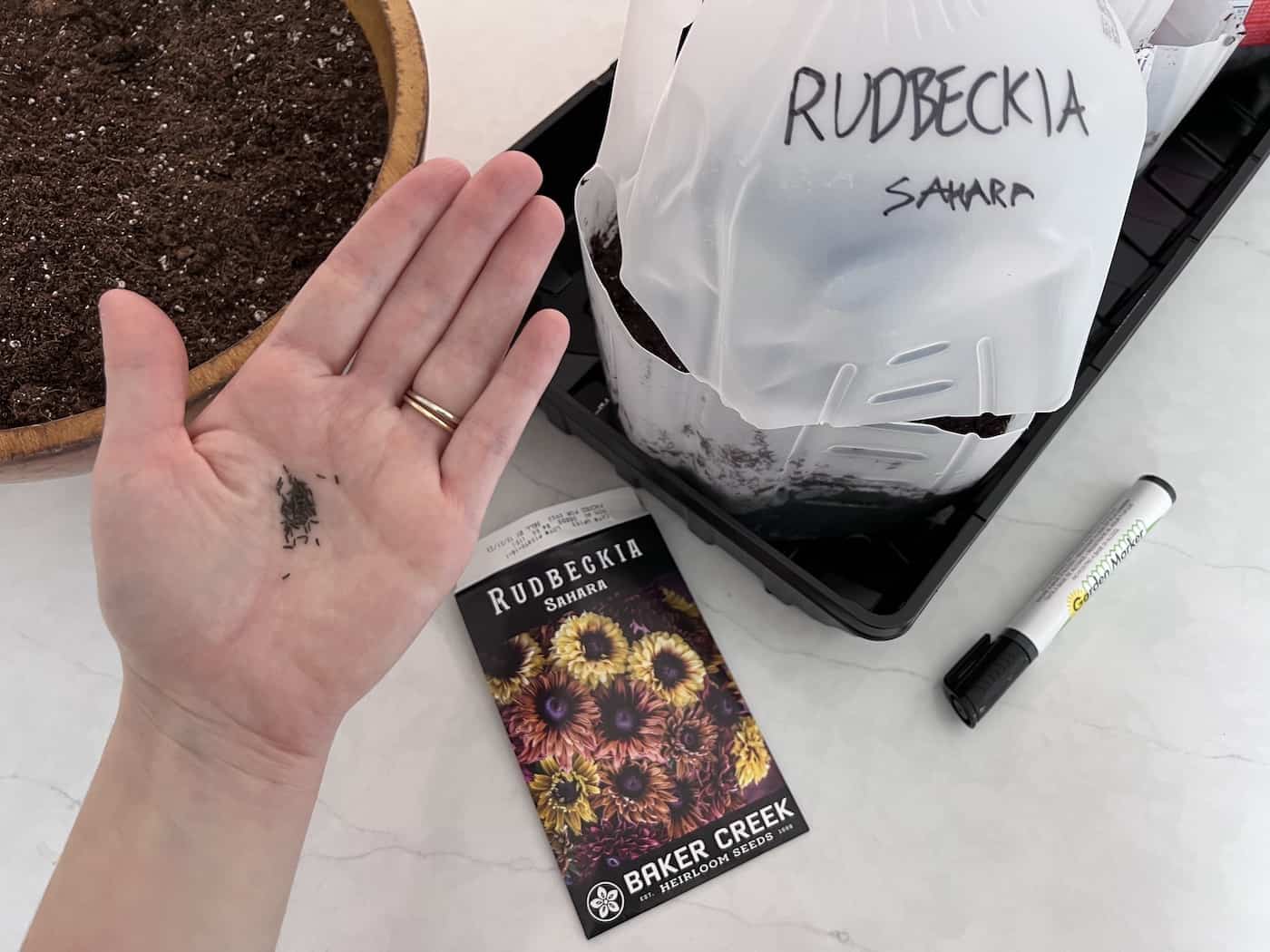
Planting Rudbeckia in the fall is a strategic move, as it allows ample time to develop a robust root system throughout the cooler months. As spring emerges, the well-established roots can support vigorous growth, ensuring a profusion of iconic blooms in the subsequent summer. You can also winter sow Rudbeckia (see photo above) to get first-year blooms.

14. Bee balm
Bee Balm, known scientifically as Monarda, is an effervescent perennial that adds a touch of whimsy and wildness to the garden. Its unique, crown-like blooms come in a brilliant array of colors: deep reds, hot pinks, purples, and sometimes soft lavenders. Each flower head consists of a dense cluster of tubular petals, creating a shaggy, layered look, not unlike fireworks frozen in mid-explosion. Typically, these plants can reach heights of 2 to 4 feet, with their blossoms sitting proudly atop sturdy stems.
Bee Balm, as its name suggests, is a beacon for pollinators. Positioned in full sun to part shade, it prefers moderately fertile, moist, yet well-draining soil. Though it appreciates consistent moisture, Bee Balm is also relatively drought-tolerant once established. However, its preference for moisture also means it can tolerate periods of wet soil, unlike many perennials. Gardeners should be mindful of its susceptibility to powdery mildew, a condition best combated by ensuring good air circulation around the plant.
To plant Bee Balm, choose a location that gets ample sunlight. Dig a hole about twice the width of the plant’s root ball, set the plant inside so its crown aligns with the soil level, then backfill and water well. When planting in the fall, Bee Balm sets down roots in preparation for a vibrant display the following summer. Its long blooming period, from early to late summer, along with its magnetic allure for bees, hummingbirds, and butterflies, makes it not only a visual treat but also a vital hub of garden activity. For those looking to create a lively, eco-friendly garden patch, Bee Balm is a surefire selection.
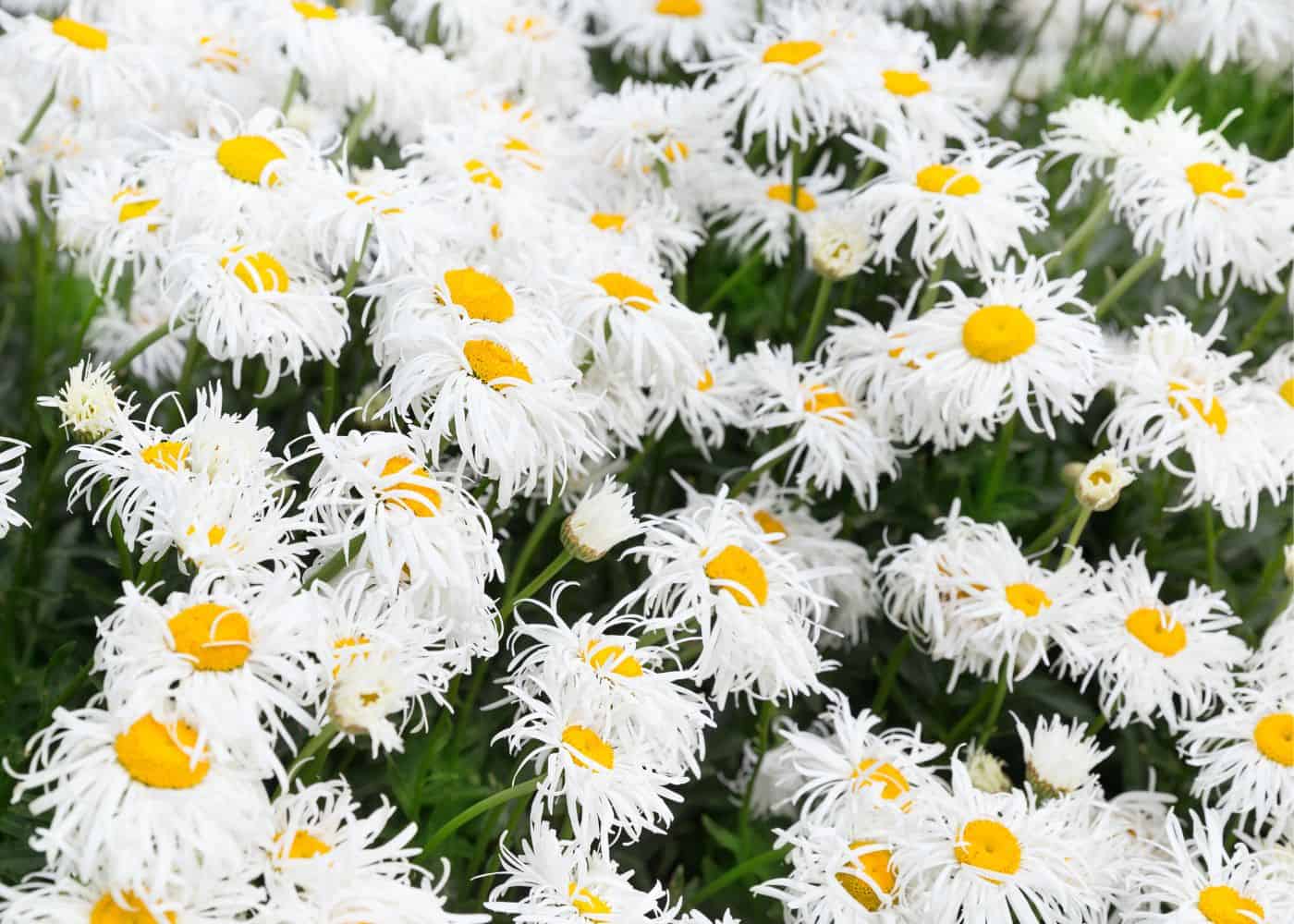
15. Shasta daisy
Shasta Daisies are the epitome of classic garden charm, exuding an innocent and timeless elegance. Their iconic blooms are characterized by a constellation of pristine white petals that radiate outwards from a bright, sun-yellow center. Each flower head, resembling a miniature sun, stands atop sturdy, slender stems that can range from 1 to 3 feet in height, depending on the variety. The dark green, lance-shaped leaves form a dense basal clump, offering a verdant backdrop that further accentuates the luminosity of the blooms.
Shasta Daisies are remarkably adaptable. They relish full sun, basking in its warmth to produce their most vibrant blossoms, but can tolerate partial shade. When it comes to soil, they are fairly forgiving, though they thrive best in well-draining and moderately fertile soil. Regular watering is appreciated, but once established, Shasta Daisies showcase commendable drought resistance, making them suitable for various garden settings.
Planting Shasta Daisies involves selecting a sunny spot, digging a hole about twice the width of the root ball, and setting the plant in place, ensuring its crown sits at soil level. After backfilling, a deep watering will help the plant settle. Fall plantings enable the daisies to establish their roots during the cooler months, gearing up for a profuse floral display in late spring to early summer
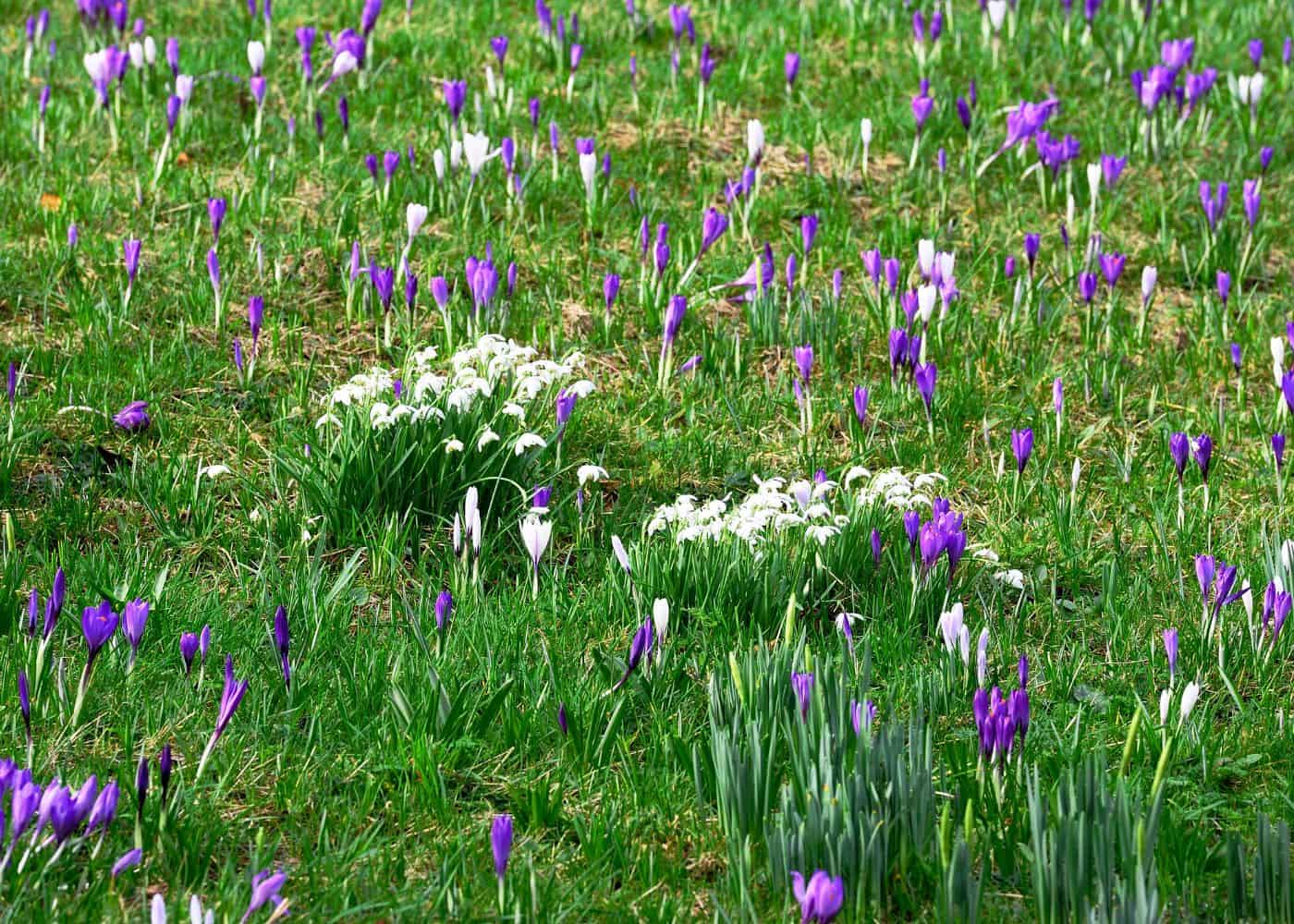
16. Flowering bulbs that perennialize well
Many flowering bulbs are celebrated not just for their inaugural bloom but also for their ability to return year after year, enriching gardens with perennial splendor. Some of the best bulbs that perennialize well when planted in the fall include daffodils, snowdrops, crocus, fritillaria, alliums, and certain tulips (especially the species and some Darwin hybrids).
Planting bulbs in the fall sets the stage for a vibrant spring awakening. When preparing the garden bed, loosen the soil to a depth of about 8 to 12 inches and mix in some compost or organic matter to enhance fertility and drainage. As a general rule of thumb, bulbs should be planted at a depth of about two to three times their height, with the pointed end facing upward. Ensuring good spacing between the bulbs, generally three times the bulb’s width, will prevent overcrowding and allow for optimal growth.
Water the newly planted bulbs thoroughly to settle the soil and provide them with the necessary hydration to initiate rooting. If your area is prone to severe frosts or freeze-thaw cycles, consider mulching the bed to offer insulation against temperature fluctuations. Lastly, while autumn rains often provide adequate moisture, if the season is particularly dry, it’s a good idea to water, too, to ensure the bulbs don’t dry out.


